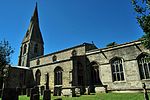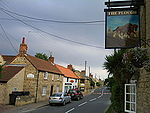No. 7 Flying Training School RAF

No. 7 Flying Training School (7 FTS) is a former Royal Air Force flying training school that operated between 1935 and 1994.From 1948 to 1954, No 7 Flying Training School was located at RAF Cottesmore, flying Tiger Moths, Harvards, Prentices and Balliols. During 1950 many improvements were made to the hangars and buildings at RAF Valley and on 1 April 1951 No. 202 Advanced Flying School was reformed at Valley, within No. 25 Group RAF, to train fighter pilots on de Havilland Vampire and Gloster Meteor jet aircraft. Vampire FB.5 and T.11 and Meteor T.7 marks were used until the unit was re-designated No. 7 Flying Training School (FTS) on 1 June 1954. On 15 August 1960 the unit was renumbered No. 4 Flying Training School RAF.The School was based at RAF Church Fenton, Yorkshire between 1962 and 1966 and again between 1979 and 1992, equipped with Hunting/BAC Jet Provost T.3A and T.5A trainers. Its final iteration came at RAF Chivenor, Devon when 2 Tactical Weapons Unit was redesignated as 7 FTS with the BAe Hawk T.1 operated by 19(R) and 92(R) Squadrons. It was disbanded for the final time on 30 September 1994 with the closure of Chivenor as an RAF station and its transfer to the Royal Marines.
Excerpt from the Wikipedia article No. 7 Flying Training School RAF (License: CC BY-SA 3.0, Authors, Images).No. 7 Flying Training School RAF
Cottesmore Road,
Geographical coordinates (GPS) Address Nearby Places Show on map
Geographical coordinates (GPS)
| Latitude | Longitude |
|---|---|
| N 52.729444444444 ° | E -0.65138888888889 ° |
Address
Cottesmore Road
LE15 7BL , Cottesmore
England, United Kingdom
Open on Google Maps








